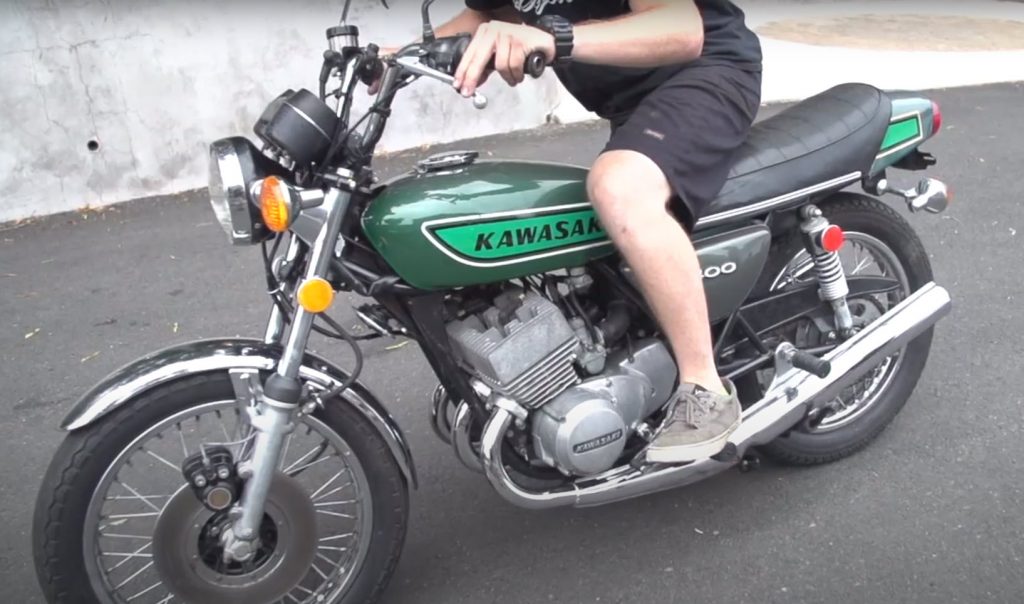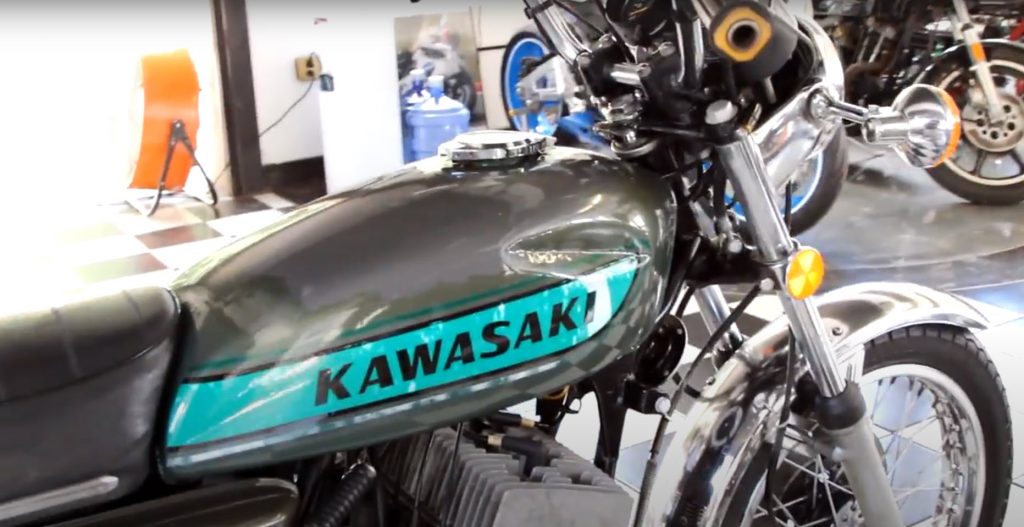The S Series was a three cylinder sequence Kawasaki launched after the success of their A1-250 and A7-350 twin bikes, as an answer to their customers’ demands during the early 70’s.
Thanks go out to our article sponsor today – Houston Parking Lot Striping

1974 S3-400
This seventh model produced for the series. The design was resembling of the very first model manufactured in 1971, the S1-B 250, but with a disk brake at the front. It made it look bigger and further reminiscing of the company’s other products, such as the H2-B.
It was offered in two colors: candy red or candy sky blue.
The mechanism was neoprene fixed into the edging to aid decrease tremor and the mufflers were one-piece without a connector gum in the middle of the silencer and the down pipe. The finning on the cylinder’s heads and tubs were shaped to provide an entirely dissimilar look from the S2 and the outside apparatus gears were exceedingly refined.
1975 S3-A 400
There weren’t much changes done to this sample, the color options retained candy red but switched the second alternative to candy green, and the form of the tank marker was adjusted to have it match with the S1-C, H1-F and H2-C. A minor label was adjoined to the end piece like in the former bikes as well.
The lateral panel’s insignias were replaced from chrome to white, and the headlamp braces were turned to chrome.
Kawasaki 400
More recently – after the withdrawal of the triple bikes – Kawasaki launched a brand new series called Ninja Series, with the inclusion of the 400 sample sport bike as a successor of the Ninja 300. The latter was struggling through Euro IV emission criteria amenableness, so the company opted for replacing it along with giving the new model important improvements in device, edging, suspension, and more.
Even though it possesses a larger disarticulation, it is 17.6 lb. (8.0 kg) lighter than the Ninja 300. It has a steel grill setting with apparatus as an accentuated part resultant in mass lessening of 13 lb. (6 kg) and all LED lighting. The device encompasses a big air-box for consumption efficacy alongside with downdraft air entry. The seat’s elevation is 30mm inferior to Ninja 300, enhancing stand-over.
The suspension is firmer than the Ninja 300 with a greater junction. There are tauter 5-spoke wheels, comparable to the Ninja 650, occasioning small unsprang heaviness and improved waylaying steadiness than previous prototypes.
The sample as a whole was first announced at the Tokyo Motor Show in 2017, and was launched to the American public on December 1 of that same year.

Euro IV compliance proposed the bike to be taken to the European market as well and, in India, it didn’t replace the Ninja 300 but was pulled together in the vicinity at Kawasaki’s industrial plant in Chakan, Maharashtra, for then be sold along with the Ninja 300. Yet, as of now, the Z250 is the single bike in India’s up-to-date products list in the 250 cc category presented by the company.
Wonderful to have you return to our site again and read another article. We hope you found the article informative and actionable. Contact us with any questions or to submit a suggestion or tip. If we end up using one on our site, we will give you full credit. Does your business need Parking Lot Striping in Houston, TX? Visit our sponsor so we can continue to bring you valuable content

